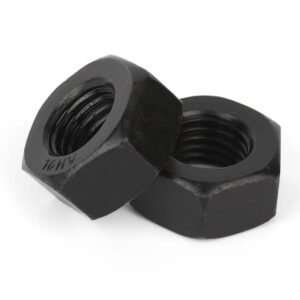Understanding Passivation Surface Treatment for Stainless Steel Fasteners
Passivation Surface Treatment: A Key to Enhancing Stainless Steel Fastener Performance
Passivation is a widely-recognized surface treatment technique used primarily to enhance the corrosion resistance of stainless steel fasteners. This process is essential across multiple industries, especially where stainless steel is exposed to aggressive environments. The Flybear Fastener team implements advanced passivation processes to ensure our fasteners meet the highest performance standards.
What Is Passivation?
Definition
Passivation is a chemical treatment process for stainless steel that removes free iron and other contaminants on the metal surface, leaving behind a uniform, passive oxide layer. Typically, this is achieved by immersing the fasteners in an acid solution, such as nitric or citric acid.
Technical Background
The roots of passivation date back to the early 20th century, but modern processes have evolved to meet the needs of highly specialized fields like aerospace and medical equipment manufacturing. In the fastener industry, passivation has become a standard practice for stainless steel components to ensure longevity and enhanced corrosion resistance.
Common Applications & Scope of Use
| Fastener Types | Application Sectors |
|---|---|
| Bolts, Nuts, Screws, Washers | Automotive |
| Threaded Rods, Studs | Aerospace |
| Self-tapping Screws | Electronics |
| Precision Fasteners | Construction & Infrastructure |
| Specialized Stainless Connectors | Marine, Food Processing, Industrial Machinery |
Passivation is widely used with a range of stainless steel grades including 304, 316, and 410, among others.
Performance Features of Passivated Stainless Fasteners
| Feature | Description |
|---|---|
| Corrosion Resistance | Enhanced passive layer protects against rust, oxidation, and harsh environments. |
| Visual Appearance | Clean, bright, and uniform surface finish; no discoloration or pitting. |
| Surface Hardness | Passivation does not significantly change hardness but helps preserve integrity. |
| Conductivity/Insulation | Generally maintains the natural conductivity of stainless steel. |
Passivation is especially advantageous in marine and medical environments due to its non-toxic, clean properties.
Passivation Process Flow
Preparation
- Degreasing: Removes oils and residues from manufacturing.
- Mechanical Cleaning: Media blasting or brushing as a pre-treatment.
- Rinsing: Thorough water washing to eliminate solid contaminants.
Treatment
- Immersion in an acid bath (typically nitric or citric acid).
- Controlled time and temperature to form the oxide layer.
Post-Treatment
- Thorough rinsing with deionized water.
- Drying under clean-room conditions if required.
- Optional inspection under ASTM A967 or similar standards.
Pros and Cons of Passivation
Key Advantages
- High corrosion resistance especially in chlorinated or salty environments.
- Non-electrolytic and energy-efficient.
- No coating, so thread tolerances remain unchanged.
- Environmentally safer options like citric acid are now available.
Limitations
- Only applicable to stainless steel and certain alloys.
- Requires clean, contamination-free surfaces to be effective.
- Ineffective on carbon steel or heavily contaminated parts.
Comparative Analysis: Passivation vs Other Surface Treatments
| Treatment | Suitable Materials | Corrosion Protection | Cost | Surface Impact |
|---|---|---|---|---|
| Passivation | Stainless steel only | Excellent | Moderate | No coating |
| Zinc Plating | Carbon steel, stainless | Good | Low | Adds thickness |
| Phosphating | Carbon Steel | Fair | Low | Matte finish |
| Anodizing | Aluminum | Good | High | Coloring effect |
Passivation is ideal when precision, non-alteration of dimensions, and purity are key.
Industry Standards & Compliance
Passivated fasteners often conform to standards such as:
- ASTM A967: Standard specification for chemical passivation treatments.
- AMS 2700: Aerospace-focused passive treatment specification.
- ISO 16048: Passivation of corrosion-resistant stainless steel fasteners.
Environmental & Safety Factors
Modern passivation avoids hazardous substances like hexavalent chromium. Citric acid-based solutions have emerged as safer alternatives, meeting RoHS (Restriction of Hazardous Substances) directives, and ensuring personal and environmental safety.
Cost Overview and Economic Viability
The cost of passivation is relatively low compared to other advanced coatings. It requires minimal infrastructure and has long-term cost benefits due to increased corrosion resistance, reduced part replacement, and lower maintenance cost. For stainless steel applications, passivation provides one of the best value-to-performance ratios in surface treatments.
Conclusion: Partner with a Trusted Fastener Manufacturer
We believe in delivering the highest quality fastener products through innovative processes like passivation. Flybear Fastener specializes in precision-engineered stainless steel solutions to meet your needs across industries. We provide complete fastener solutions for construction, electronics, automotive, and more. To learn about our stainless steel offerings or to contact us for tailored industry insights and quotations, visit our website now.








